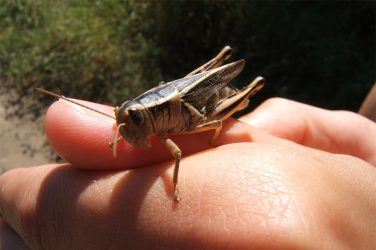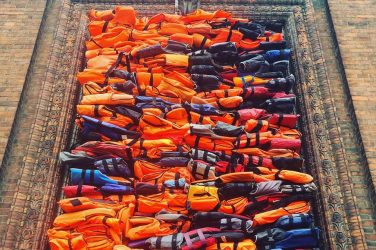In a normal summer, a trip to Sardinia would hardly be out of the ordinary for many European tourists. In a normal summer, we associate Italy with pristine landscapes, scorching hot cities, crowded beaches, and breathtaking historical architecture. But 2020 has been anything but normal. After months of pandemic-focused news, E&M author Sara Piludu, who grew up in Sardinia herself, reminds us of a different side of Italy, telling us about wine, warm ocean water, and an island still very much worth visiting.
We have finally reached the autumn of 2020 and many Europeans have been postponing their summer vacation until now, choosing to travel as spontaneously as possible. Regions that rely on tourism have elaborated ways and concepts of attracting tourists despite the pandemic to recover from the absence of the normal number of guests. In Italy though, there have been several public debates about the Sardinian government’s plan of keeping its territory COVID-19-free by demanding a negative test before one can enter the island. In September, Sardinia’s president Christian Solinas issued a decree demanding exactly this, which is now being heavily criticised by the Italian government.
“These island dwellers are strange anyway”

Sardinians are said to be stubborn, reluctant and rather grumpy compared to the cliché of the outgoing and talkative Italians. In the debate on the obligatory COVID19-test, this cliché has come up a lot, with people also criticizing that Sardinians do not appreciate tourism as an economic sector enough. Since many people on the island rely on tourism, this accusation is absolutely incorrect but one aspect about it is true in my point of view: when talking to the inhabitants of Sardinia, most people decisively reject mass tourism that has a negative impact on the island’s environment. Private beaches and coastlines full of multistoried hotels barely exist in Sardinia, despite the island having almost 2.000 km of coast line. The compromise? Hotel villages that are integrated into the coasts natural appearances, plenty of farm holiday centers and holiday houses/apartments for rent. So, if you decide to book an autumn holiday in Sardinia, you don’t have to worry about finding an accommodation, at least not this year. And don’t worry about the people’s hospitality, the negative clichés are only that – clichés.
Painfully beautiful
Poems have been written about the pain the island allegedly causes (“mal di Sardegna”) – expressing that spending time in Sardinia might have a deep impact on one’s soul, causing an everlasting nostalgia. Does that sound like an exaggeration? Not for me. Having grown up there, my memories of the island are very sensual and ever-present, like the smell of the “macchia”, the scrubland with plenty of rosmarine, lavender, wild fennel and myrtle, the sound of beach waves and chirping crickets, the fascinating beauty and a bit of creepiness when visiting an ancient nuraghe ruin and the intense taste of the different foods. The good thing is, one does not have to visit the island in summer to have these experiences, on the contrary, traveling in autumn can be even more pleasant as the long heat period is over and temperatures are mild and most of the vegetation is evergreen.
The taste of autumn

Food and cooking are a common small talk topic among Sardinians and a crucial part of islanders’ collective identity. Normally, I would recommend visiting Sardinia in autumn for its dozens of fiests that are usually held in late summer or autumn to celebrate everything from wind-surfing to saints, foods and wines. Unfortunately, this year most of them have been postponed to next year, or whenever the pandemic will be contained. So you’ll have to rely on restaurants to serve typical dishes or to shop the right groceries during your visit. Autumn is the ultimate season for cardoons (it.: cardi) and artichokes starting from November. Many restaurants integrate these vegetables in their autumn and winter menus but you can also buy them in local markets and eat them raw. Just take some olive oil, add a pinch of salt and some pepper and use it as a dip. Make sure you peel the cardoon’s outer layer and eat only the white part of the artichokes. Don’t panic if your tongue starts getting dry and grey though, these vegetables contain a lot of iron. Most of the grape harvest also starts in September and you’ll find an extensive selection of endemic varieties in local markets, make sure you try moscatello, nuragus, monica and bovale.
Speaking of grapes and wine, if you don’t like wine, a trip to Sardinia might change your opinion: have vermentino with any fish dish, monica or cannonau with meat. Whoever is curious about fish and seafood should check out restaurants and markets along the coast lines: you’ll love the mussels as well as the sea urchins. Pork and especially wild boar dishes are the protagonists of the kitchen in the island’s interior, especially roasted and served as salsiccia (sausage).
Places to visit despite the pandemic
Arriving by plane you’ll probably land at Elmas airport in Cagliari. There, its old town and castles are now home to museums and art galleries that allow only small groups of visitors to enter at the same time. Therefore, if you want to visit one of them, make sure you check out whether reservations are required. You might also check out the San Benedetto market for grocery shopping and then head to the Poetto, Cagliari’s city beach, maybe with a guided hiking tour on the devil’s saddle, a rock formation that looks like a saddle or demon indeed!
If you like to spend time in a more quiet area, try visiting the barbagia region with Sardinia’s highest mountain Gennargentu and beautiful canyons in the eastern part of the island. You might also love to see the murals of Orgosolo, huge wall paintings that tell Sardinia’s recent history with all its social and political challenges.

The western part of the island is known for its strong winds making it a great destination for windsurfers in autumn. Beautiful places to visit in the southwest are the small islands Carloforte and Sant’antioco and the super colourful town Iglesias. Check out Bosa and Alghero in the northernwestern part. Traveling up north by car you might also consider leaving the faster E25 route and take the SS292 instead so you can drive along the coastline if you have enough time. The northern region is a good place to start touring the island when arriving by ferry: make sure to visit the Asinara National Park with its rich flora and fauna, including the famous white donkeys.
Lastly, Sardinia is famous for its beaches, indeed the bathing season lasts until mid-October. So even if it’s an autumn trip, don’t forget to bring your bathing clothes just in case you get lucky with a sunny day and warm temperatures, since the water in October is still warmed up by the summer sun, usually being a cozy 23° C.
Cover photo: Courtesy of Sara Piludu







